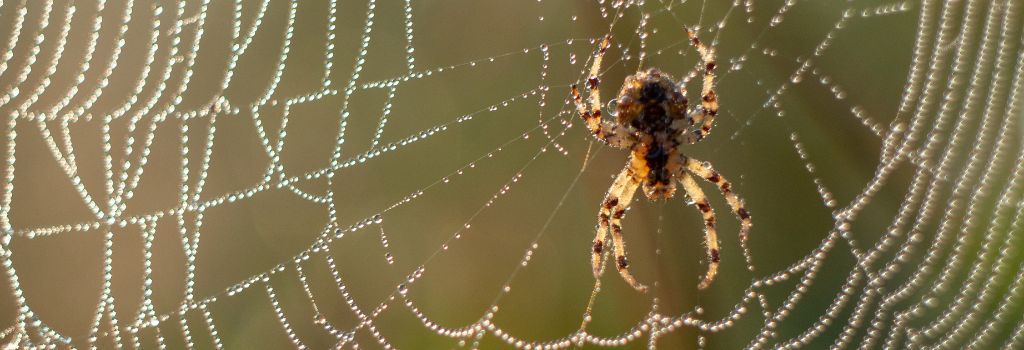We all want to keep our cats safe from harm, but there’s one sneaky threat that often goes unnoticed until it becomes a problem — bug bites. While fleas and ticks are often the main topic of conversation when it comes to pests that can affect our cats, there are many other insects and bugs that can cause irritation, pain, or even serious health issues. Whether your cat enjoys exploring the great outdoors or is an indoor-only pet, it’s important to be aware of the risks and know how to identify and treat cat bug bites and stings.
In this blog, we’ll be breaking down the most common culprits of cat bug bites that we see and hear about at the clinic, give you tips on how to identify them, and make recommendations on when it’s time to take your cat in to see your veterinarian.
Can Cats Get Bug Bites?
Absolutely! Cats can be bitten or stung by a variety of insects, just like humans. While outdoor cats are at a higher risk due to their exposure to different environments, even indoor cats can fall victim to these pesky pests. A mosquito or spider can sneak into your home through a cracked window or an open door, and some bugs like fleas or ticks can be carried indoors on clothing or other pets. Depending on what region you live in, some of these bugs and insects may present a greater threat than others, so be sure to check with your veterinarian for any suggestions on keeping the bugs at bay, like preventive medication recommendations or tips for checking on outdoor cats.
When it comes to the topic of bug bites on cats, it's important to remember that cats have sensitive skin and can react more severely to insect bites or stings than some other animals. A seemingly small bug bite on a cat can result in an allergic reaction, localized irritation, rashes and bumps, or even a serious infection that requires intervention and treatment from a veterinarian. Understanding which bugs are most likely to cause trouble for your cat is the first step in not only preventing situations where your cat can get bitten but also properly handling treatment and home care in the event that your cat does have a bug bite or sting incident.
Why Fleas and Ticks Are Both Insects and Parasites
Before we dive deep, a quick clarification of our lingo within the exam room. Fleas and ticks are often referred to as insects because they belong to the class of tiny, multi-legged creatures that share similar traits. Fleas, for example, are true insects, while ticks are actually arachnids, like spiders. But what makes them more than just pesky bugs is that they’re also external parasites. This means they live on the outside of a host — like your dog or cat — and feed off them to survive. In the exam room, we call them parasites because they rely on your pet’s blood for nourishment, which can lead to health issues like skin irritation, anemia, and even the spread of dangerous diseases. So, while fleas and ticks are insects, it’s their parasitic behavior that makes them a big concern for your pet’s health!

Bugs That Commonly Bite Cats
While fleas and ticks are probably the most well-known culprits, cats are susceptible to a variety of insect bites – regardless of whether they spend more time indoors or outdoors. Some of the most common bugs that bite or sting cats include:
- Fleas and Ticks: These parasites are notorious for causing irritation and transmitting diseases. Flea bites can lead to flea allergy dermatitis (FAD) in cats, a condition where cats develop an allergic reaction to flea saliva. Ticks, on the other hand, can potentially transmit diseases like Lyme disease, although this is more common in dogs than in cats.
- Mosquitoes: Just like humans, cats can be bitten by mosquitoes. While these bites can cause mild irritation, they also pose a risk of transmitting heartworm disease, a life-threatening condition in cats.
- Spiders: While most spider bites on cats are harmless, certain species like the black widow or brown recluse can cause severe reactions in cats, including muscle pain, tremors, and fever.
- Bees, Wasps, and Hornets: These insects can deliver painful stings that may lead to swelling, pain, and allergic reactions in cats. Multiple stings can be dangerous and require immediate veterinary attention.
- Flies: Cats are susceptible to fly bites, especially if they have a wound or sore. Fly bites can cause irritation, and in some cases, flies may lay eggs in open wounds, leading to maggot infestations.
- Mites: Ear mites and skin mites can cause a lot of discomfort in cats, leading to intense itching, hair loss, and skin infections.
- Ants: Some species of ants, especially fire ants, can deliver painful stings or bites that result in localized swelling and redness.
The Effects of Bug Bites on Cats
Bug bites and stings can cause a range of effects, from mild irritation to severe health complications. The impact of a bite or sting depends on the type of insect, the location of the bite, and your cat’s individual sensitivity.
Skin Issues
One of the most common effects of bug bites on cats is skin irritation. This may manifest as redness, swelling, itching, or hives. Cats will often scratch, lick, or bite at the affected area, which can lead to secondary infections if the skin is broken. Chronic exposure to certain pests, such as fleas, can also lead to conditions like flea allergy dermatitis (FAD), which results in severe itching and hair loss.
Disease and Illness
Some bug bites can transmit diseases that affect cats’ overall health in numerous ways. Fleas, for example, are carriers of tapeworms, while ticks can transmit bacterial infections like Lyme disease or ehrlichiosis. Mosquito bites, though seemingly benign, can infect cats with heartworms, a dangerous parasite that affects the heart and lungs and can cause a number of health complications.
Severe allergic reactions, known as anaphylaxis, can also occur if a cat has an extreme sensitivity to a particular insect venom. This can result in difficulty breathing, swelling of the face or throat, and a rapid decline in health. In these cases, immediate veterinary attention is necessary and provides the best outcome for recovery.
Common Symptoms of Cat Bug Bites
- Hives
- Difficulty breathing
- Dizziness
- Swelling or redness around the bite
- Swelling around the face and mouth
- Multiple raised, red spots on the skin
- Vomiting
- Respiratory distress
- Anaphylactic shock
If anything is more severe than a single, basic bite or sting, it’s time to get in touch with your veterinarian. Anything that looks excessively swollen, discolored, or like it’s spreading across your cat’s skin is a cause for concern and should get checked out as quickly as possible.
Other symptoms non-directly related to the area of the bite, like diarrhea, vomiting, collapsing, dizziness, agitation, and lethargy can indicate severe bites or adverse reactions to bites, and should be an immediate cause for concern and be brought up to your vet ASAP.
Identifying Each Type of Bite and Sting
Identifying the type of bug bite on a cat can help guide appropriate treatment. Here’s how to recognize the signs of common insect bites and stings:
Fleas and Ticks
Every good pet owner should already know all about fleas and ticks, but for those who have never had to deal with them, identifying the bites based on sight alone can be a little tricky. Flea bites typically appear as small, red, raised bumps, often on the base of the tail, belly, or inner thighs. Cats with flea bites may scratch excessively and develop scabs or bald patches across their body or in localized spots where flea activity is most prominent.
Ticks are often a little easier to spot, especially if you're already used to giving your cat thorough tick checks after a romp outside. If you’re less familiar with ticks, it’s important to know that ticks embed themselves in the skin, so you may see a tick attached to your cat’s body. After removal, the area may be red or swollen.
Mosquitoes
Mosquito bites on cats are usually small, raised welts that may appear on areas of the body with less fur, such as the nose or ears. Cats may scratch at the site, causing it to become red or inflamed, alerting owners to the presence of the bite.

Spiders
Cat spider bites can be tricky to identify, especially since you’ll likely find the bite after the spider is long gone, and the severity of the bite will differ based on the type of spider. Most spider bites result in mild swelling and redness, but bites from venomous spiders like the black widow can cause more severe reactions, including lethargy, muscle pain, and difficulty walking. If you can’t confirm
Tip: If your cat was bitten by a spider, try and search the area around you for the culprit, and if you can, capture it. Knowing exactly what type of spider has bitten your cat can go a long way in ensuring they get proper treatment.
Bees, Wasps, and Hornets
Bees, wasps, and hornets are the usual culprits for insect stings on cats. These stings typically cause localized swelling, redness, and pain. Cats may paw at the area or try to lick the sting in an effort to get some relief – this attention to the area is often when owners will be tipped off that something is wrong or that their cat is uncomfortable or in pain. Multiple stings or stings inside the mouth or throat can be dangerous and require immediate attention, so if you suspect something is wrong, a quick trip to the vet is your best course of action.
Flies
Fly bites on cats can be hard to spot, as these bites usually appear as small, red bumps and are often found around the ears, face, or any open wounds. Flies can also cause flystrike, where they lay eggs in open sores or wounds, leading to maggots.
Mites
Mites are microscopic, so you won’t see the bites themselves. However, you may notice symptoms like intense itching, hair loss, or a buildup of dark debris in the ears (in the case of ear mites).
Ants
Ant bites can cause small, raised, red welts. In the case of fire ant stings, the area may be intensely painful and swollen, leading your cat to excessively lick or paw at the affected area.
Treating Cat Bug Bites and Stings
Treatment for bug bites and stings depends on the type of insect and the severity of the reaction. If your cat is showing signs of an allergic reaction, such as swelling, difficulty breathing, or vomiting, seek veterinary care immediately. For mild bites or stings, here’s what you can do at home:
- Treating Flea Bites: Treat your cat with a veterinarian-recommended flea control product. Regular flea prevention is key to avoiding infestations. For immediate relief, you can use an anti-itch spray or cream recommended by your vet.
- Treating Tick Bites: Remove the tick carefully using tweezers, ensuring you grasp the tick close to the skin and pull it out steadily. Clean the area with antiseptic, and monitor for any signs of infection or illness.
- Treating Mosquito Bites: Keep your cat indoors during peak mosquito hours (dawn and dusk). If your cat has been bitten, use a cold compress to reduce swelling and an anti-itch cream to prevent scratching.
- Treating Spider Bites: Clean the area with soap and water. For non-venomous bites, applying a cold compress can reduce swelling. If you suspect a bite from a venomous spider, seek veterinary attention immediately.
- Treating Bee, Wasp, or Hornet Stings: Remove the stinger by scraping it off with a credit card (don’t use tweezers, as squeezing the stinger can release more venom). Apply a cold compress to reduce swelling, and monitor your cat for any signs of an allergic reaction.
- Treating Fly Bites: Clean the area with soap and water, and apply an anti-itch cream if necessary. If you notice maggots in a wound, seek immediate veterinary care.
- Treating Mite Infestations: Mite infestations require prescription medications from your vet, so take your cat in for an exam if you suspect mites are the culprit.
- Treating Ant Bites: Apply a cold compress to reduce swelling, and keep an eye on your cat to ensure they don’t continue licking or scratching the area.
Team Up With Your Veterinarian to Identify, Treat, and Prevent Bug Bites on Cats
Bug bites on cats can range from minor irritations to serious health concerns, so it’s important for cat owners to remain vigilant and know what to do if they notice the presence of a bite or sting on their cat’s face or body.
Knowing how to identify different types of bites and stings, and understanding the appropriate treatments, can make a huge difference in your cat’s overall health and comfort. Always consult your veterinarian if you're unsure about a bite, or if your cat has a severe reaction. And remember: Prevention is key — use appropriate flea, tick, and mosquito control whenever possible, remove stagnant water from around your pet’s environment, and keep your home and yard free of pests as much as possible by securing doors, windows, and other cracks and crevices bugs could use to get into your home.
If you have questions and you'd like to reach out to us, you can call us directly at (212) 288-8387, or you can email us at [email protected]. Don't forget to follow us on social media Facebook, Instagram.

